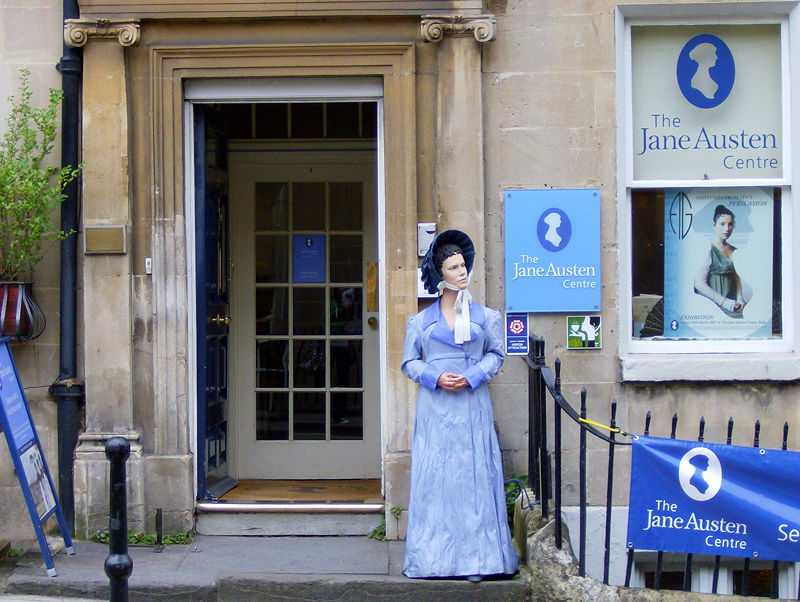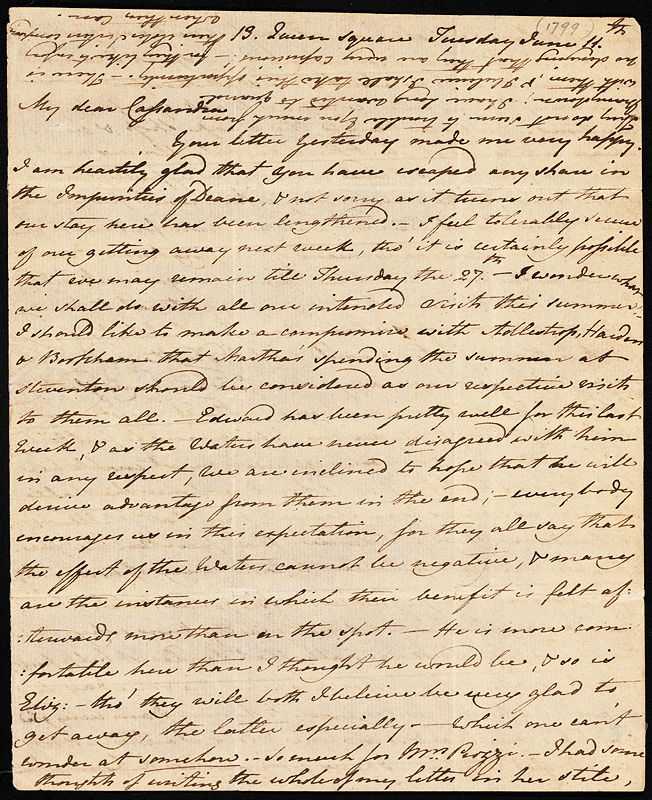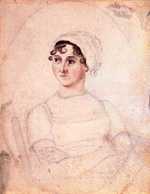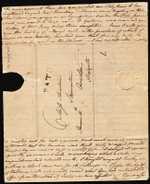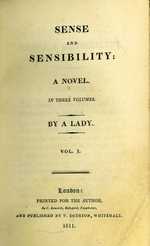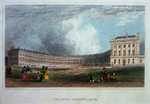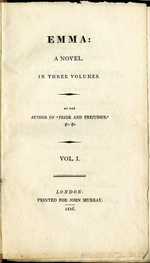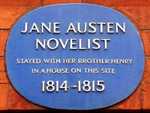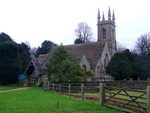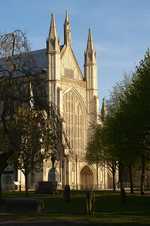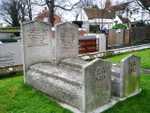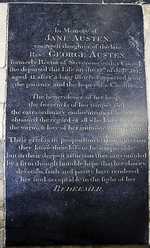1. Early life
Jane Austen was born on 12th December 1775, one of eight children to George and Cassandra Austen.
Jane’s Oxford-educated father was a rector and the family lived at Steventon rectory in Hampshire. Reverend George Austen kept a large library of books in the house, which Jane and her siblings were encouraged to read. Education and creative thinking played a large role in the children’s upbringing and they would write and put on their own plays.
Of the eight children six were boys, with Jane becoming very close to her older sister, also called Cassandra like her mother. The two sisters were sent off to boarding school from a young age to broaden their classical education, with Jane becoming dangerously ill at one point while away. However, they were to return to Steventon early after just five years for financial reasons.
Yet the rectory was to prove a stimulating environment, as would the Austen’s network of friends and family which would see them visiting neighbouring villages and towns, with the occasional trip to Bath and London thrown in too. This would all help Jane when later writing her novels, drawing on these experiences for settings, characters and story lines.
Jane Austen was already writing by the age of 12, mostly plays, short stories and verse. Between 1787 and 1793 she wrote enough material for three notebooks, Volume the First, Volume the Second and Volume the Third, collectively known as the Juvenilia. Two works of this time included the satirical ‘Love and Friendship’ and the short novel ‘Susan’, with the former cementing her view she should try and become a serious writer.
2. Early Writing
During the 1790’s Jane Austen began to pen what would later become some of her major novels.
In 1795 she wrote ‘Elinor and Marianne’, a novel told through a series of letters and centred on the characters which gave the novel its name. In its current format the finished novel was read to the rest of the family sometime in 1796, but it would eventually be the basis for ‘Sense and Sensibility’.
Similarly she also started work on drafts of a novel entitled ‘First Impressions’ which ultimately would become the all-time classic ‘Pride and Prejudice’. Her father tried to get ‘First Impressions’ published but it was refused.
Jane returned to ‘Elinor and Marianne’ in 1797, making revisions including converting it in to a third person story rather than one told through letters. She also turned her attention back to ‘Susan’ which would eventually become ‘Northanger Abbey’. The manuscript for ‘Susan’ was offered and accepted by the publisher Richard Crosby who paid £10 for it, though for some reason it was never produced.
3. A New Chapter
In December 1800 George Austen retired from the clergy and the following year the family, including Jane, left Steventon rectory to set up home in Bath.
Sadly Jane’s father would not enjoy a long retirement, passing away in 1805. This left Jane, her sister Cassandra and her mother in residence still in Bath but in newly found financial problems.
There was now a period of severe upheaval as the three women moved from place to place while receiving help and support from the brothers. Stability was restored in 1809 when one of Jane’s brothers, Edward, provided a cottage for them to live in the village of Chawton in Hampshire.
Once settled again Jane started to prepare to publish her novels with the help of one of her other brothers, Henry. This was a time when it was generally looked down upon for a woman to be doing most forms of work, let alone writing. Wife and mother was your lot according to society’s norms of the time. Therefore Henry acted as Jane’s literary agent and in 1811 ‘Sense and Sensibility’ was published through London publisher Thomas Egerton, receiving favourable reviews.
Next up was ‘Pride and Prejudice’ which Egerton published in 1813, giving more attention to the marketing this time round. The novel was so well received that a second edition had to be printed before the year was out. Jane was on a roll and ‘Mansfield Park’ was next to be published in 1814. This novel was better received by the public than the critics and was her best selling and most profitable work at that time.
Jane Austen turned to a more well known publisher, John Murray, to release ‘Emma’ in late 1815. He also published second editions of her earlier novels. Readers enjoyed her realistic characters and the wit and satire in which she portrayed them.
They were a refreshing and welcome change to the more typical novels of the time, which could be over-dramatic in their approach to romance. Even the Prince Regent was said to have copies of her novels at his residences.
4. Later Life
By 1816 Jane Austen’s health had taken a turn for the worse, though she tried not to let it affect her writing.
She continued to work, completing the novel ‘The Elliots’, later to be entitled ‘Persuasion’ and in 1817 starting on a piece called ‘The Brothers’ which would become ‘Sanditon’. Although her illness was progressive Jane would try and play it down to her friends and family, but eventually she would find walking difficult and would lack energy.
In 1817 Jane was taken to Winchester by her brother Henry and sister Cassandra as they sought medical help for her illness. Sadly it was not to be. Jane Austen died on 18th July 1817 and was buried in Winchester Cathedral. Following her death Henry and Cassandra helped have Northanger Abbey and ‘Persuasion’ posthumously published as a set.
Henry penned a contributory note for the publication where he was able to inform readers that it was his sister Jane who had written the novels they had come to like so much.
‘Sanditon’ remained an unfinished novel with just eleven chapters completed before illness probably prevented further work. In spite of her illness the completed chapters still showed the wit, satire and beautifully observed characters which came to be so loved by her legion of fans.
5. Her Legacy
The fact that the novels of Jane Austen are read and so loved still today speaks volumes for their quality and their continued relevance.
Her books have been translated for readers in 35 countries, illustrating her continued global appeal, and can still sell more copies in a year then leading contemporary writers. Other art forms have paid homage to her work with the 1995 TV series adaptation of ‘Pride and Prejudice’ starring Colin Firth and Jennifer Ehle particularly memorable.
Jane Austen also had her famous admirers while she lived. Sir Walter Scott was one of the major writers at the time and he gave a positive review of ‘Emma’, which must have given Jane a thrill. Scott would later expand on his favourable opinions of Jane, commenting “That young lady has a talent for describing the involvements and feelings and characters of ordinary life which is to me the most wonderful I have ever met with”. High praise indeed.
Today her fans can enjoy indulging themselves at the Jane Austen Centre in Bath or by visiting the Jane Austen House Museum in Chawton, Hampshire. Her life and times are celebrated by the Jane Austen Literary Foundation, an organisation by one of Jane’s descendants which raises funds for a variety of literary based projects across the globe.
Jane Austen was a strong willed woman for her time, much like the characters she wrote about. Yet she was never to find the true love that her characters pursued. There is only one authenticated drawing of Jane which allows fans to put a face to her work, a small pencil and watercolour sketch drawn by her sister Cassandra.
In 2017 in recognition of her life and the enduring appeal of her work the image of Jane Austen was chosen to be placed on the new £10 note by the Bank of England.
